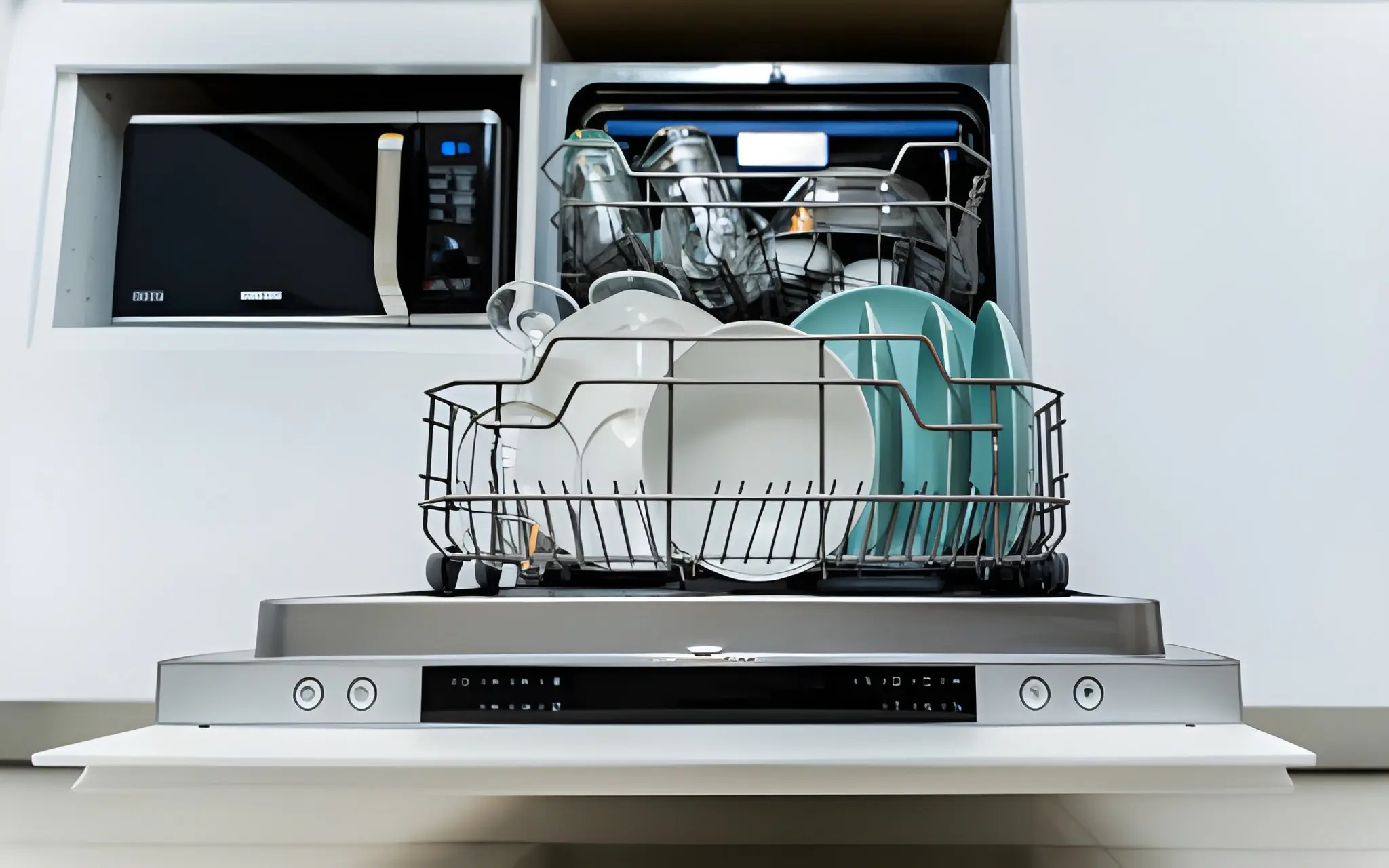The appliance market is flooded with dishwashers at every price point, which makes spending extra on a premium Smeg dishwasher seem questionable at first glance. But there’s actual engineering and material science behind the price difference—not just branding. Smeg uses stainless steel tub construction instead of plastic polymer, which affects heat retention and longevity in ways that show up after years of use. Their pump systems operate at different pressure levels with brushless motors that statistically last 40-60% longer than standard induction motors. The control boards use commercial-grade components that handle voltage fluctuations better, which matters more than people realize in areas with inconsistent power supply.
Build Quality You Can Actually Measure
I’ve looked inside both budget and premium dishwashers (don’t ask why, long story), and the difference in component quality is pretty obvious once you know what you’re seeing. Smeg uses thicker gauge stainless steel for the inner tub—usually around 0.8-1.0mm compared to 0.5mm in cheaper models. That might sound like a tiny difference, but thicker steel distributes heat more evenly and resists warping over time.
The door hinges use dual-spring mechanisms with stainless steel tension cables rated for 50,000+ cycles. Cheaper dishwashers use plastic-coated cables that start weakening after maybe 15,000 cycles. I know this sounds super specific, but it’s why premium dishwashers don’t develop that annoying droopy door issue after a few years.
Spray arms are made from reinforced nylon composite with embedded metal cores, not just basic plastic. They maintain their shape better under high water pressure and temperature cycling. The bearing assemblies that let them spin freely use ceramic components instead of plastic bushings—less friction means better rotation and more consistent cleaning over the machine’s lifetime.
Energy Efficiency That Actually Saves Money Long-Term
Yeah, the upfront cost is higher, but the operating costs tell a different story. Smeg’s premium models typically rate at A+++ energy classification, which translates to about 237 kWh per year for 280 standard cycles. A mid-range A+ model might use 290 kWh annually. Over a 10-year lifespan, that’s a difference of 530 kWh—at average electricity rates, that’s somewhere around $80-120 in savings depending on where you live.
Water consumption matters too. Premium Smeg dishwashers use as little as 8.5 liters per cycle compared to 12-15 liters in standard models. If you run the dishwasher once daily, that’s about 1,600 liters less water per year. The savings add up gradually but consistently.
The heat pump technology in some models is genuinely impressive from an engineering standpoint. Instead of using a simple heating element that converts electricity directly to heat (which is inefficient), the heat pump transfers thermal energy from the wash cycle to pre-heat incoming water. It’s similar to how a refrigerator works but in reverse. This cuts energy use by another 20-30% compared to traditional heating systems.
Noise Levels Make Daily Life More Pleasant
This might seem like a minor thing until you actually live with a quiet dishwasher. Smeg’s premium models run at about 38-42 decibels, which is roughly equivalent to a quiet library or light rainfall. Budget models often hit 50-55 decibels—the difference between those numbers might not sound huge, but decibels are logarithmic. A 10-decibel increase actually represents a doubling of perceived loudness.
The noise reduction comes from multiple engineering approaches. Extra insulation layers, obviously, but also vibration dampening mounts for the motor and pump assembly. The wash cycles use variable speed pumps that ramp up gradually instead of starting at full blast, which eliminates that sudden loud whoosh when the cycle begins.
Having a quieter dishwasher means you can run it during dinner, while watching TV, or overnight without it being disruptive. I’ve started running mine late at night to take advantage of off-peak electricity rates, which wasn’t realistic with my old loud dishwasher.
Smart Features That Aren’t Just Gimmicks
Some smart appliance features feel useless, but Smeg’s soil sensors actually do something practical. Optical sensors measure water turbidity (cloudiness) during the cycle and adjust wash time, water temperature, and detergent dispensing accordingly. If your dishes are only lightly soiled, the cycle might finish 20 minutes early and use less energy. If they’re heavily soiled, it extends the cycle and increases temperature automatically.
The delay start function is more useful than I expected. Programming the dishwasher to run at 2 AM when electricity is cheaper has cut my utility bills noticeably. The connectivity features let me check cycle progress from my phone, which seems silly until you’re at the grocery store trying to remember if you need dishwasher detergent.
Some models have dedicated zones with adjustable spray intensity. You can run a heavy cycle on the bottom rack for pots while doing a gentle cycle on top for wine glasses—in the same load. That kind of flexibility reduces the number of total cycles you need to run.
Also Read-Home Selling Tips for Every Situation











